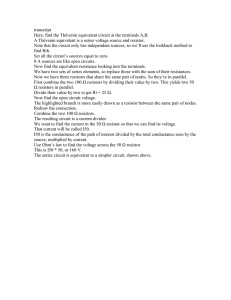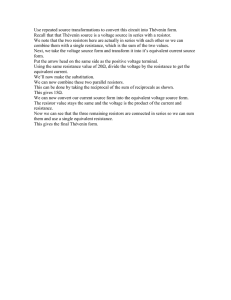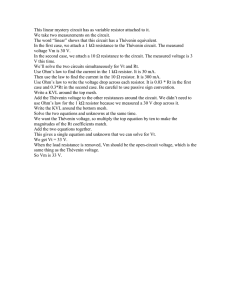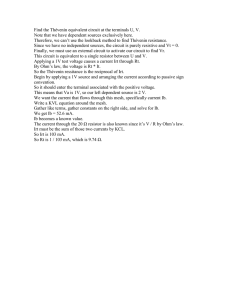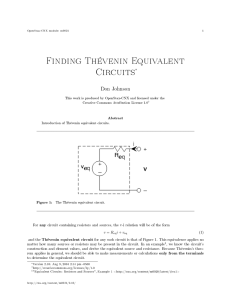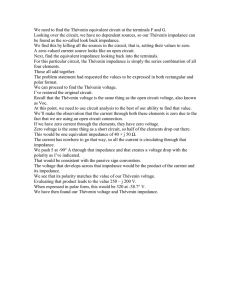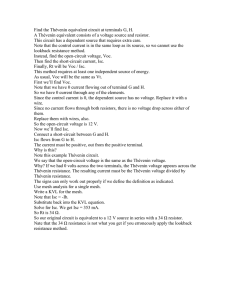Find the Thévenin equivalent at terminals E,F.
advertisement
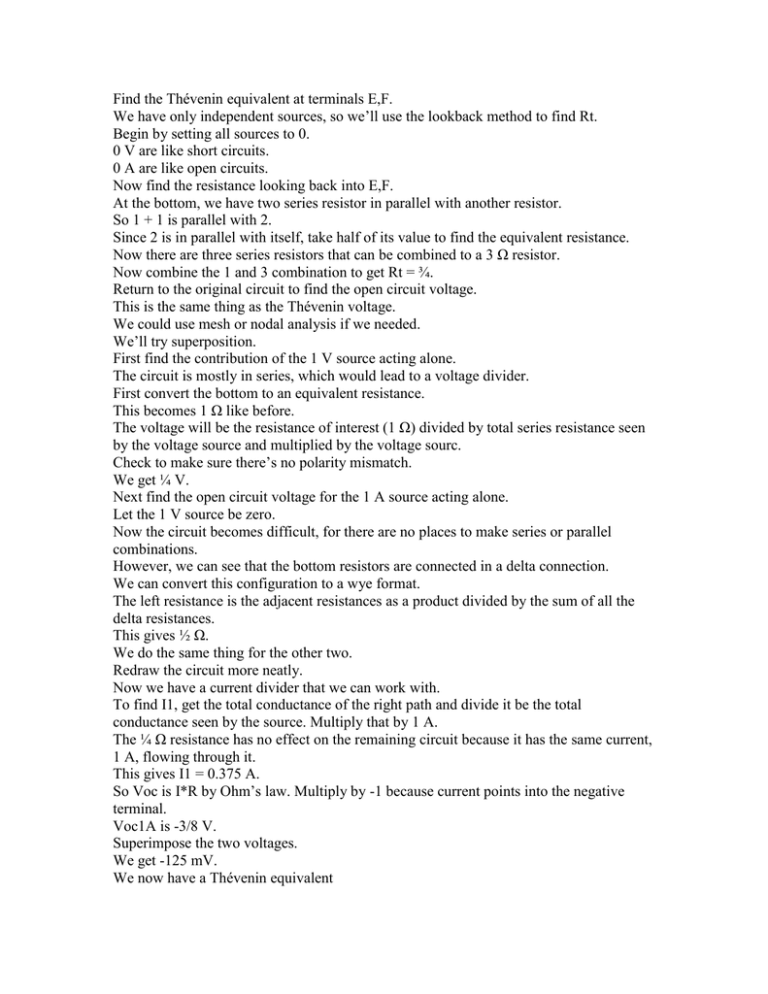
Find the Thévenin equivalent at terminals E,F. We have only independent sources, so we’ll use the lookback method to find Rt. Begin by setting all sources to 0. 0 V are like short circuits. 0 A are like open circuits. Now find the resistance looking back into E,F. At the bottom, we have two series resistor in parallel with another resistor. So 1 + 1 is parallel with 2. Since 2 is in parallel with itself, take half of its value to find the equivalent resistance. Now there are three series resistors that can be combined to a 3 Ω resistor. Now combine the 1 and 3 combination to get Rt = ¾. Return to the original circuit to find the open circuit voltage. This is the same thing as the Thévenin voltage. We could use mesh or nodal analysis if we needed. We’ll try superposition. First find the contribution of the 1 V source acting alone. The circuit is mostly in series, which would lead to a voltage divider. First convert the bottom to an equivalent resistance. This becomes 1 Ω like before. The voltage will be the resistance of interest (1 Ω) divided by total series resistance seen by the voltage source and multiplied by the voltage sourc. Check to make sure there’s no polarity mismatch. We get ¼ V. Next find the open circuit voltage for the 1 A source acting alone. Let the 1 V source be zero. Now the circuit becomes difficult, for there are no places to make series or parallel combinations. However, we can see that the bottom resistors are connected in a delta connection. We can convert this configuration to a wye format. The left resistance is the adjacent resistances as a product divided by the sum of all the delta resistances. This gives ½ Ω. We do the same thing for the other two. Redraw the circuit more neatly. Now we have a current divider that we can work with. To find I1, get the total conductance of the right path and divide it be the total conductance seen by the source. Multiply that by 1 A. The ¼ Ω resistance has no effect on the remaining circuit because it has the same current, 1 A, flowing through it. This gives I1 = 0.375 A. So Voc is I*R by Ohm’s law. Multiply by -1 because current points into the negative terminal. Voc1A is -3/8 V. Superimpose the two voltages. We get -125 mV. We now have a Thévenin equivalent

